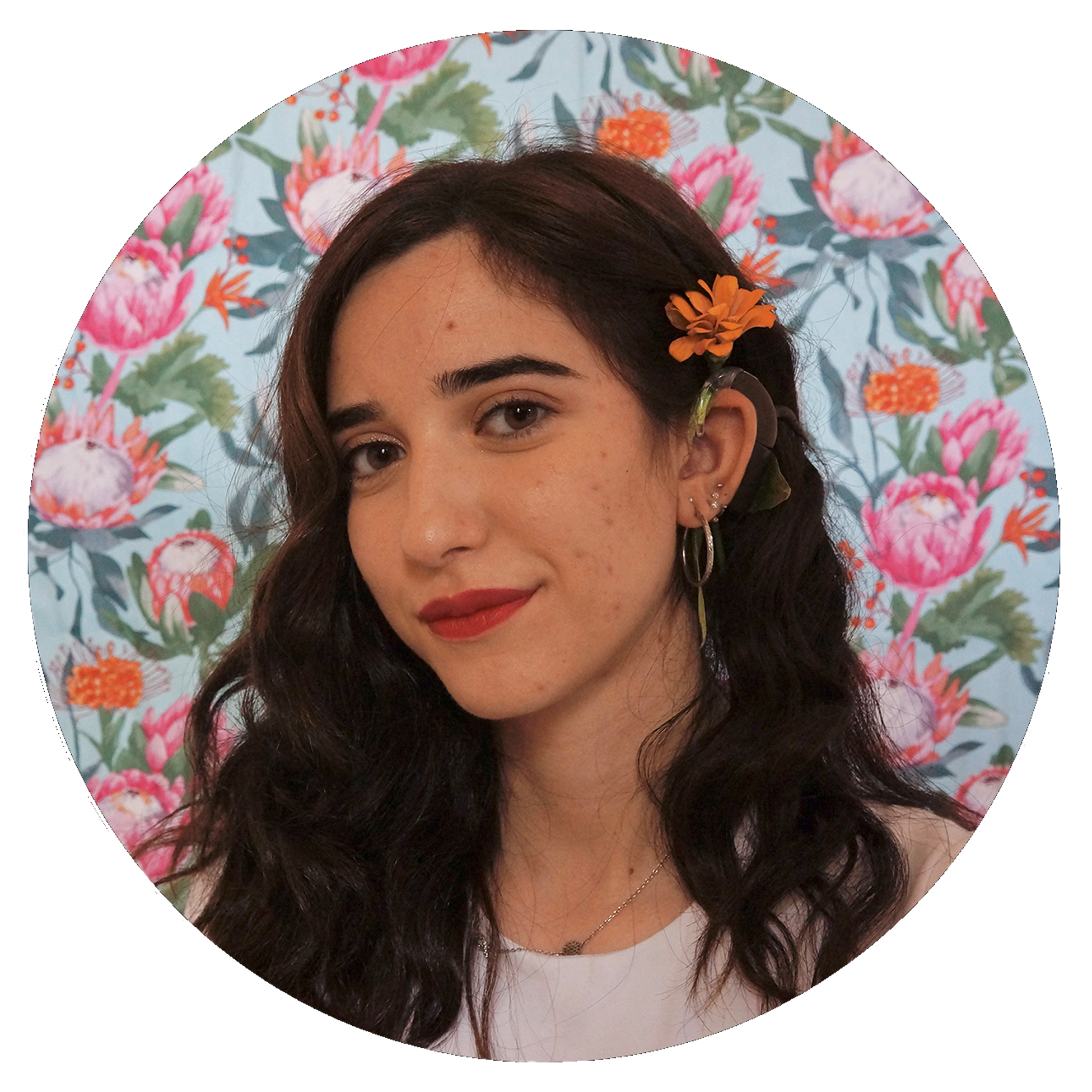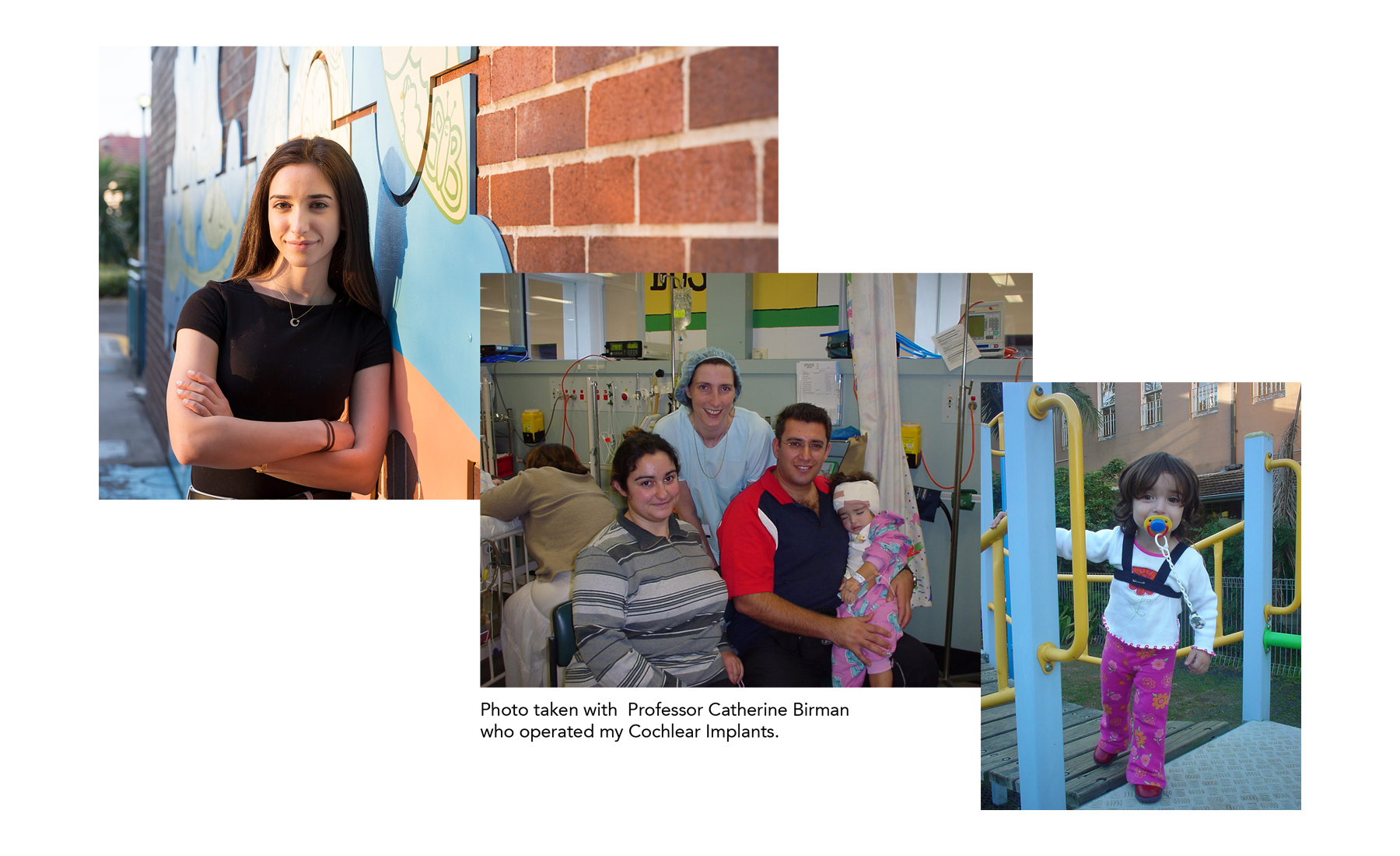About me
I am a passionate Digital Designer with a hearing impairment, wearing two Cochlear Implants. My personal journey has inspired me to create inclusive products for all communities. I have graduated with a Bachelor of Design and Technology, majoring in Digital Innovation and Design Practice. My aim is to bridge the gap between diverse abilities and advocate for inclusivity. I am dedicated to shaping a compassionate and empowering future through the power of design.

The Journey that Inspired My Passion for Inclusive Design
From the moment I received my first cochlear implant at the tender age of 2, and then the second one at 5, my life changed forever. Those small devices opened up a world of sound and possibilities that I had never known before. They became my bridge to communication, to connecting with others, and to fully experiencing the beauty of life.
As the years went by, I found myself naturally drawn to understanding the intricacies of these miraculous cochlear implants. With every new model that hit the market, I couldn’t help but dive into the details, analysing the improvements and changes they brought. It fascinated me how technology could continuously enhance the way I interacted with the world around me.
In high school, this fascination took a new turn. I began to notice that while cochlear implants had seen incredible advancements, other products for people with disabilities lagged behind. It struck me deeply that not everyone had access to the same level of innovation and inclusivity that I was fortunate to experience.
That realisation became a spark that ignited a passion within me. I couldn’t ignore the desire to make a difference, to create more inclusive products that would empower not just individuals with disabilities, but everyone. I wanted to break down barriers, erase boundaries, and bring people together as one, where each person’s unique abilities would be celebrated, not seen as limitations.
This profound journey, from the transformative impact of my cochlear implants to the recognition of the need for inclusive innovation, has inspired me to pursue a path in inclusive design. I am determined to create products and solutions that embrace the diversity of our world and ensure that everyone can thrive and participate fully in every aspect of life.
Inclusive design is not just a career path for me; it is a mission fueled by personal experiences and a deep-rooted belief in the power of technology and compassion. I want to contribute to a world where every individual feels valued, understood, and connected, regardless of their abilities.
With unwavering determination, I embark on this journey, grateful for the inspiration that shaped my purpose and excited to make a positive impact on the lives of others through inclusive design.


DESIGN SKILLS
UX Design
User experience design is the process designers use to build products that provide great experiences to their users. UX design refers to feelings and emotions users experience when interacting with a product.
Brand Identity
Brand identity attracts new customers to a brand while making existing customers feel at home. Brand identity includes logos, typography, colours, packaging, and messaging, and it complements and reinforces the existing reputation of a brand.
Packaging Design
Packaging designs need to capture attention from the shelf, but once they draw customers in, your product needs to hold their interest. Also, packaging design is significant in the design process.
Market Research
Marketing is highly important because understanding the customers’s needs and wants needs to be considered in the design process. The whole purpose of creating a product is for the target audience and situation.
Prototypes
I enjoy making prototypes and understanding how my ideas on sketch is produced through 3D models. Making prototypes is important because it helps find the issues and save time without wasting money and time.
Sustainable Materials
Sustainable materials is very important in the design process because in the circular economy, material waste has increased and the waste ends up in landfill. Therefore, creating sustainable products helps close the loop in circular economy.
Digital Design
Technology has evolves into our daily lives and it has become another way of creating products, advertising products and connecting with the world. In digital design, I can create apps such as ‘Augmented Reality’, websites, digital marketing, and online advertisements. These skills are important because creating products needs to be versatile to online and in person.
In detail skills as a digital designer
Technical Design
- Design techniques, tools, and principles used to make detailed technical plans, blueprints, drawings, and models.
Engineering & Technology
- Use engineering, science and technology to design and produce goods and services.
Mechanical
- Machines and tools, including their designs, uses, repair, and maintenance.
Computers & Electronics
- Circuit boards, processors, chips, electronic equipment, and computer hardware and software, including applications and programming.
Production & Processing
- Raw materials, production processes, quality control, costs, and ways of making and distributing goods.
- Technical Design – 86%
- Engineering & Technology – 70%
- Mechanical – 40%
- Computers & Electronics – 50%
- Production & Processing – 65%
Operations Analysis
- Understanding needs and product requirements to create a design.
Active Learning
- Being able to use what you have learnt to solve problems now and again in the future.
Critical Thinking
- Thinking about the pros and cons of different ways to solve a problem.
Originality
- Come up with unusual or clever ideas, or creative ways to solve a problem.
Deductive Reasoning
- Use general rules to find answers or solve problems logically.
Oral Comprehension
- Listen to and understand what people say.
Visualisation
- Imagine how something will look after it is moved around or changed.
Oral Expression
- Communicate by speaking.
- Operations Analysis – 80%
- Active Learning – 90%
- Critical Thinking – 90%
- Originality – 100%
- Deductive Reasoning – 66%
- Oral Comprehension – 85%
- Visualisation – 100%
- Oral Expression – 100%
software experience
Photoshop/Illustrator
Able to use these skills to create conceptual designs, logos, packaging layout and more.
Solidworks
This skill is great way to demonstrate the 3D model of my designs and create prototypes by using 3D printer.
Archicad
This program is used to create houses and this program is perfect for displaying products in a house setting.
After Effects
A great program to create motion films and 3D graphics motion for logos and websites.
Unreal Engine
A great way of using 3D modelling from Archicad and Solidworks to create Augmented reality and VR to advertise the designs.
iMovie/Premier Pro
To demonstrate products and prototypes that I have created and use for editing for graphic motion clips.
